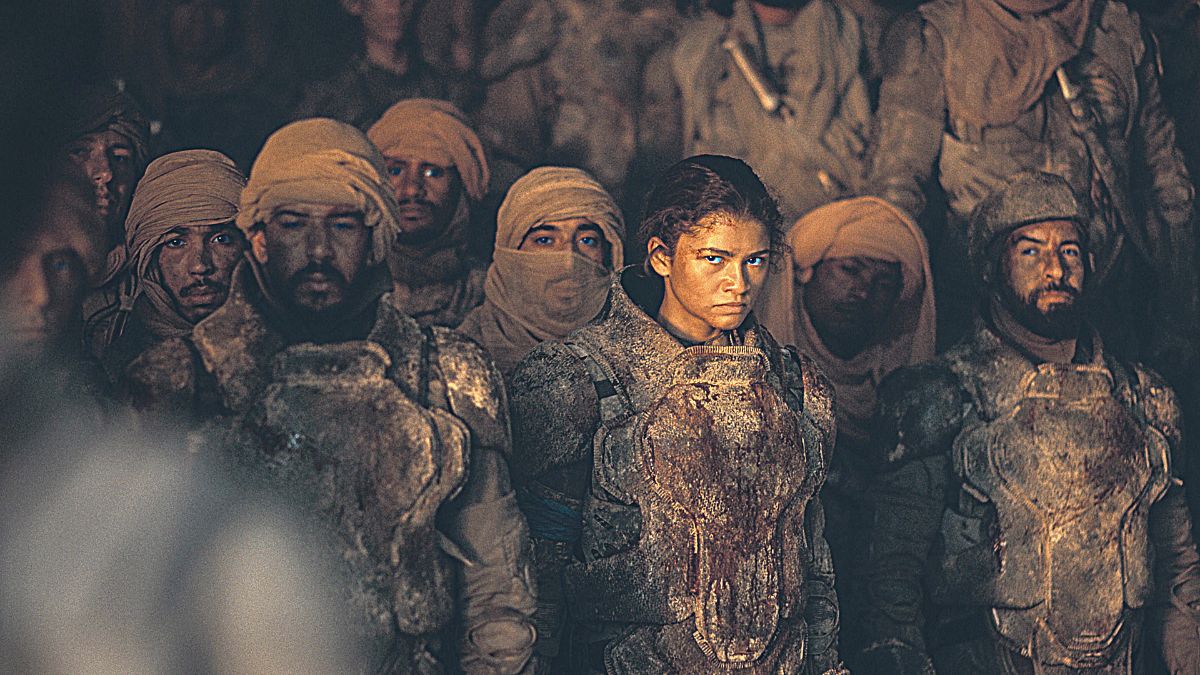The world Frank Herbert constructed for his Dune collection is likely one of the richest examples of science fiction, but by some means Denis Villeneuve managed to take it even additional in his film diversifications.
The fictional language we hear Zendaya, Javier Bardem, Souheila Yacoub, and Timothée Chalamet converse was solely described and featured in snippets in Herbert’s e-book, which meant Villeneuve needed to create it virtually from scratch for his display screen adaptation. A sophisticated process that speaks to his dedication to the Dune universe, however one which has been carried out earlier than, in initiatives like Recreation of Thrones or James Cameron’s Avatar. Villeneuve enlisted Dothraki developer and linguist David J. Peterson for the job, creating an intricate new language with acquainted references to the true world.
What’s the Fremen language?

The Fremen in Villeneuve’s diversifications of the Dune novel converse a constructed language referred to as Chakobsa. There’s a actual language with that very same identify spoken within the northwestern Caucasus area, which is alleged to be a secret searching language utilized by princes and nobles. The few excerpts featured within the books are largely influenced not by the true Chakobsa, however by a mix of Romani, Serbo-Croatian, and, particularly, Arabic.
Chalamet’s main man, Paul Atreides, hails from the Scottish-looking planet Caladan, which we see in 2021’s Dune however not 2014’s Half Two. There the Atreides converse English, which capabilities as a stand-in within the movies for the Imperium’s official language of Galach within the supply materials. Paul research and is fascinated by Fremen tradition when he strikes to Arrakis, and eventually will get to make use of a few of that data in Half Two, particularly whereas speaking with Zendaya’s Chani or Bardem’s Stilgar in Chakobsa.
The forged went to “Fremen faculty,” as Villeneuve put it in an interview with Leisure Weekly, “They took weeks to study the language and got here on set completely fluent. There was even a dialect coach on set. All people took it so critically, and I used to be so moved to see Timothée [Chalamet] give complete speeches in Chakobsa,” the director stated. We’re undoubtedly grateful to Chalamet, as a result of that speech Villeneuve was speaking about would possibly simply go on to develop into one of the memorable scenes and bits of appearing in Twenty first-century moviemaking.
Peterson has spoken about his expertise growing Chakobsa for Villeneuve previously. He was adamant in together with the smallest variety of references to modern-day languages attainable, citing the 8 millennia hole between our time and the occasions of Dune as the rationale why it might be illogical to keep up any phrases identified and spoken right this moment. Arabic-inspired buzzwords like Lisan al-Gaib, Muad’Dib, and Shai-Hulud, after all, needed to carry over into the movies for worry of upsetting diehard followers of the books (together with Villeneuve, who has cherished them since he was 14). Nevertheless, different Arabic phrases current in Herbert’s novel like “jihad” and the conflict cry “Ya hya chouhada” (“Lengthy stay the fighters/martyrs”) had been modified for the movies, because of their real-world connections — the primary to radical Islamic organizations, and the latter to the Algerian Struggle of Independence in opposition to the French from 1954 to 1962, which, when stated by a white savior-type character in Villeneuve’s movies, would have come off as tone-deaf.


